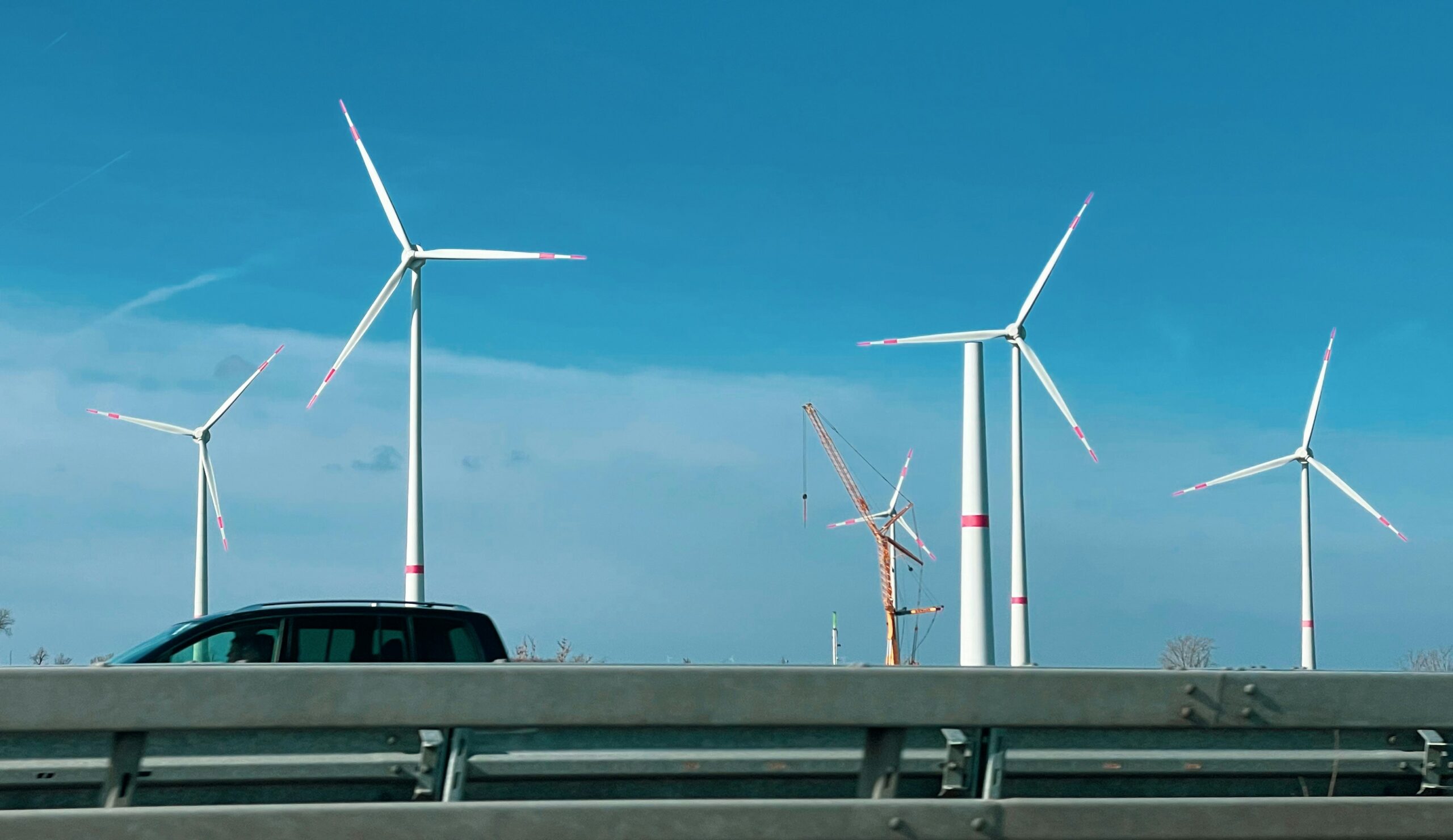Understanding the Impact of Green Technology on Environmental Conservation
 Photo by Bernd 📷 Dittrich on Unsplash
Photo by Bernd 📷 Dittrich on Unsplash Introduction to Green Technology
Green technology, often referred to as sustainable or clean technology, represents a revolutionary approach designed to minimize environmental impact and promote sustainability. The core principle of green technology is to foster environmental conservation by reducing waste, increasing energy efficiency, and promoting the use of renewable resources.
Historically, green technology has its roots in early efforts to harness natural energy sources. The initial strides in renewable energy can be traced back to ancient civilizations that utilized windmills for grinding grain or water wheels for mechanical power. However, the modern concept of green technology began to take shape during the late 20th century, driven by the growing awareness of environmental issues and the depletion of fossil fuel resources.
The oil crises of the 1970s marked a pivotal moment, highlighting the vulnerability of relying on non-renewable resources. In response, significant investments were made in developing alternative energy sources, such as solar panels and wind turbines. These early projects laid the groundwork for the contemporary landscape of green technology, which has vastly expanded to include advanced innovations in fields like bioenergy, geothermal energy, and hydroelectric power.
The evolution of green technology has been characterized by continuous advancements and increasing efficiency. Modern green technologies encompass a broad spectrum of sustainable practices, from energy-efficient appliances and electric vehicles to smart grids and green buildings designed to minimize carbon footprints. These advancements are supported by ongoing research and policy initiatives aimed at mitigating climate change and promoting long-term environmental health.
Today, green technology is not just a niche sector but a critical component of global efforts to combat environmental degradation. By understanding its historical context and evolution, we can appreciate the significant strides made in reducing our ecological impact and continue to support the development of innovative solutions for a sustainable future.
Categories of Green Technology
Green technology spans multiple sectors, each contributing to environmental conservation in diverse ways. One of the most notable categories is renewable energy. Technologies within this category include solar power, harnessed through photovoltaic panels; wind energy, captured by turbines; and hydroelectric power, generated by dams and waterways. These forms of energy generation significantly reduce greenhouse gas emissions compared to traditional fossil fuels, making them essential tools in the fight against climate change.
Energy efficiency is another crucial area of green technology. Innovations here focus on optimizing energy use to minimize waste. Smart grids represent a key development, using digital communications technology to enhance electricity distribution and reduce energy loss. Additionally, the adoption of LED lighting over conventional incandescent bulbs dramatically cuts energy consumption and extends the lifespan of lighting systems, underscoring the advantages of energy-efficient technologies.
In the domain of sustainable agriculture, green technology offers solutions like organic farming and vertical farming. Organic farming avoids synthetic fertilizers and pesticides, aiming for a more natural, environmentally-friendly approach to crop production. Vertical farming, meanwhile, maximizes land use by growing crops in stacked layers, often indoors. This method not only conserves space but also allows for controlled environments, reducing water usage and soil degradation.
Waste management technologies contribute substantially to environmental conservation by addressing the growing problem of waste. Recycling technologies enable the reuse of materials, reducing the need for new raw resources. Waste-to-energy systems convert various forms of waste into usable energy, providing a dual benefit of waste reduction and energy production. These innovations are pivotal for managing the sustainability of urban areas.
Water purification technologies also play a vital role in green technology. Techniques like reverse osmosis, ultraviolet purification, and advanced filtration systems ensure clean and safe water access, crucial for both human health and environmental protection. These methods reduce pollutants and contaminants, safeguarding water sources for future generations.
The Role of Green Technology in Reducing Carbon Footprint
Green technology is emerging as a crucial player in the efforts to reduce carbon emissions and mitigate climate change. One of the significant contributors to this effort is the deployment of electric vehicles (EVs). Unlike conventional internal combustion engine vehicles, EVs produce zero tailpipe emissions, significantly reducing their carbon footprint. Research indicates that over the vehicle’s lifetime, an electric car can save up to 1.5 million grams of CO2 emissions compared to a gasoline-powered vehicle. This is primarily due to the increased energy efficiency and the utilization of renewable energy sources for charging.
Moreover, solar panels have revolutionized the energy sector by transforming sunlight into electricity without emitting greenhouse gases. The adoption of solar photovoltaic (PV) systems can drastically cut down carbon dioxide emissions. For instance, a typical residential solar PV system can offset approximately three to four tons of CO2 per year. This not only diminishes reliance on fossil fuels but also contributes to cleaner air, enhancing public health.
Wind turbines also play a pivotal role in reducing the carbon footprint. By harnessing wind energy to generate electricity, these turbines eliminate the need for burning fossil fuels. According to estimates, wind energy displaces about 60 million metric tons of carbon dioxide emissions annually in the United States alone. This is equivalent to taking about 13 million cars off the road, underscoring the profound impact of wind power on reducing greenhouse gases.
When comparing these green technologies to their traditional counterparts, the benefits are clear. Traditional energy sources such as coal and natural gas are significant contributors to carbon emissions. Conversely, green technologies like solar panels and wind turbines produce electricity with minimal environmental impact. Additionally, the lifecycle emissions of electric vehicles are considerably lower than those of conventional vehicles. These advancements collectively foster a more sustainable and eco-friendly future.
As green technology continues to evolve and gain widespread adoption, its role in decreasing the carbon footprint and combating climate change becomes increasingly vital. By transitioning to innovative and sustainable solutions, society can significantly reduce greenhouse gas emissions and promote environmental conservation.
Economic Benefits of Green Technology
Green technology serves as a cornerstone for sustainable economic development, offering numerous financial advantages that span job creation, cost savings, and the growth of burgeoning green markets. One of the primary economic benefits associated with green technology is the creation of new industries and employment opportunities. As industries transition towards sustainable practices, the demand for skilled labor in fields such as renewable energy, energy efficiency, and sustainable agriculture increases. According to the International Renewable Energy Agency (IRENA), the renewable energy sector alone employed 11.5 million people globally in 2019, highlighting the significant employment potential of green tech initiatives.
Another critical economic advantage of green technology is the cost savings achieved through energy efficiency. Businesses and households that implement energy-efficient solutions often experience substantial reductions in energy costs. For instance, LED lighting, energy-efficient appliances, and improved insulation not only contribute to environmental conservation but also offer impressive returns on investment by significantly lowering utility bills. According to a study by the American Council for an Energy-Efficient Economy (ACEEE), energy efficiency measures can save consumers and businesses billions of dollars annually, providing a strong incentive for widespread adoption.
In addition to job creation and cost savings, the growth of green markets presents extensive economic opportunities. The increasing global focus on sustainability has led to the expansion of markets for products and services that promote environmental health. Sectors such as renewable energy, electric vehicles, and sustainable agriculture continue to experience robust growth. For example, the global renewable energy market, valued at $928.0 billion in 2017, is projected to reach $1,512.3 billion by 2025, reflecting a compound annual growth rate (CAGR) of 6.1% from 2018 to 2025, according to Allied Market Research.
Several case studies underscore the economic benefits of green technology. Tesla, Inc., a pioneer in electric vehicles and renewable energy solutions, has not only revolutionized the automotive industry but has also spurred economic growth by generating thousands of jobs and substantial revenue. Similarly, Denmark’s comprehensive government initiatives in renewable energy have positioned the country as a leader in wind power, contributing significantly to its GDP and establishing a global export market for wind turbines and related technologies. These examples illustrate the profound economic impact of adopting green technology solutions on a national and international scale.
Challenges Facing Green Technology Adoption
Despite the numerous benefits that green technology offers for environmental conservation, its widespread adoption faces several significant challenges. One of the primary obstacles is the high initial cost associated with developing and implementing green technologies. The innovation and manufacturing of renewable energy systems, electric vehicles, and sustainable materials often require substantial capital investment, making it less attractive for investors and consumers in the initial stages.
Technological limitations also play a crucial role. Current green technologies, while innovative, may not yet match the efficiency, reliability, or scalability of traditional energy sources. For instance, renewable energy sources like solar and wind are dependent on weather conditions, leading to intermittent energy production. Additionally, energy storage solutions, such as batteries, still require advancements to compete with conventional energy storage in terms of capacity and cost-effectiveness.
Lack of infrastructure stands as another barrier. The existing infrastructure is primarily designed around fossil fuels and non-renewable energy sources, making the transition to green technology challenging. Upgrading this infrastructure demands significant time and investment, creating further hesitance among potential adopters.
Resistance from established industries also hinders the adoption of green technology. Industries reliant on fossil fuels possess considerable economic power and political influence, often lobbying against regulatory changes that would promote renewable energy sources. This resistance can slow down legislative progress and public acceptance of green technological solutions.
Addressing these challenges requires a multifaceted approach. Policy incentives and subsidies can make green technologies more financially viable, encouraging their development and widespread use. Governments can introduce tax breaks, grants, and low-interest loans to lower the entry barrier for businesses and consumers. Additionally, public awareness campaigns play a pivotal role in fostering a cultural shift towards environmental responsibility and sustainable practices.
Moreover, fostering collaboration between public and private sectors can enhance research and development efforts, driving technological advancements. By investing in education and training programs, governments can prepare the workforce for the transition, ensuring that the necessary skills and knowledge are in place to support green technology infrastructure.
Impact on Biodiversity and Ecosystem Health
Green technology plays a transformative role in safeguarding biodiversity and enhancing ecosystem health. One critical area of emphasis is the implementation of renewable energy projects, such as wind and solar farms. Strategic planning of these projects is essential to minimize habitat disruption. For instance, the placement of wind turbines in areas with lower bird and bat activity can significantly reduce the risk of wildlife collisions. Similarly, solar farms can be designed with considerations such as providing shade and habitat for wildlife, integrating with green corridors, and maintaining native vegetation.
Moreover, green agricultural practices are paramount in promoting soil health and biodiversity. Approaches such as no-till farming, cover cropping, and organic farming contribute to creating nutrient-rich, resilient soils. These practices reduce the dependence on chemical fertilizers and pesticides, which can seep into waterways and damage aquatic ecosystems. In addition, fostering a diverse array of plant species on farmlands supports wildlife habitats and encourages beneficial insect populations that are crucial for pollination.
Renewable energy projects and sustainable agriculture are complemented by positive effects on marine life through reduced pollution. The utilization of green technology reduces reliance on fossil fuels, leading to decrease in the emission of pollutants such as carbon dioxide, sulfur dioxide, and nitrogen oxides, which contribute to ocean acidification and contamination. Cleaner energy sources help maintain marine ecosystems by preserving the delicate balance of marine habitats. The reduction of harmful runoffs from farms through green agricultural practices further ensures that marine life, like coral reefs and fish populations, remains vibrant and healthy.
Together, these green technology initiatives forge a path towards enhanced biodiversity and robust ecosystem health. By focusing on sustainable infrastructure, agriculture, and energy sources, we can foster harmonious coexistence between human activities and natural ecosystems, ensuring a thriving planet for future generations.
Future Trends in Green Technology
The future of green technology holds immense promise with a range of innovations set to redefine environmental conservation efforts. One of the most groundbreaking advancements is in battery storage. Enhanced battery technology is crucial for renewable energy systems, enabling more efficient storage and distribution of solar and wind power. Innovations such as solid-state batteries offer higher energy densities and improved safety features, marking a significant stride towards a more sustainable energy future.
Hydrogen fuel cells are another promising area. Hydrogen, as a clean fuel, has the potential to revolutionize the transportation and industrial sectors. Recent advancements in hydrogen production, such as electrolysis using renewable energy sources, signify a move towards a zero-carbon future. This technology’s scalability could make it a cornerstone in global efforts to reduce carbon emissions.
Breakthroughs in sustainable materials also present exciting possibilities. Innovations in biodegradable plastics and eco-friendly building materials aim to reduce waste and promote sustainability. For instance, developments in biocomposites, which utilize natural fibers, have applications in various industries, potentially transforming construction, packaging, and more by lowering the carbon footprint and enhancing environmental conservation.
Furthermore, artificial intelligence (AI) is poised to play a critical role in optimizing energy use. AI algorithms can analyze vast amounts of data to improve efficiency in energy consumption, from smart grids to intelligent home energy management systems. These advancements could lead to reduced energy wastage and smarter resource allocation, aligning with the goals of green technology and environmental sustainability.
The potential impacts of these emerging trends are profound. As these technologies continue to evolve, they promise to deliver significant contributions to reducing greenhouse gas emissions, conserving natural resources, and promoting a sustainable environment. Thus, the future of green technology is not just a vision but a tangible path forward in the quest for environmental conservation.
Conclusion and Call to Action
As we have explored throughout this blog post, green technology plays a crucial role in environmental conservation. From renewable energy sources like solar and wind power to sustainable agricultural practices and advancements in waste management, green technologies are pivotal in reducing our environmental footprint and mitigating the impacts of climate change.
The importance of continued support and investment in green technology cannot be understated. These innovations not only help preserve our planet for future generations but also drive economic growth and create job opportunities in emerging industries. By embracing green technologies, we can work towards a more sustainable and resilient future.
As individuals, we all have a part to play in this journey towards sustainability. Simple actions such as using energy-efficient appliances, reducing water consumption, and supporting local, eco-friendly businesses can make a significant difference. Additionally, advocating for policies that promote the development and adoption of green technologies can help create a supportive environment for these advancements to thrive.
Let us commit to embracing green technology in our daily lives and championing sustainable practices within our communities. Together, we can make a tangible impact on environmental conservation and build a better, greener world for all.





Tidak ada komentar